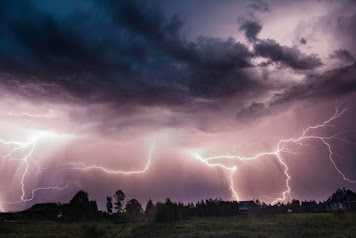Madagascar: Final Blog

Madagascar: Final Blog Madagascar is located in the Indian Ocean off the coast of southern Africa and is the fifth largest island. The population of the island is considerably about twenty-eight million and currently has one of the planet’s highest poverty rates. Despite the poverty rates and population growth, the island is considerably beautiful with its people and environment. Also, the constant hazardous weather is prominent and treacherous. Madagascar has numerous natural hazards that are considerably dangerous. One of them is cyclones. Cyclones are an area of low atmospheric pressure with rotating winds. The intensity depends on their sustained wind speeds and lowest atmospheric pressure. A form of this would be a tropical cyclone. Tropical cyclones form over warm tropical waters between the latitudes of 5-20 degrees. Extratropical cyclones form over land or water in temperate regions between the latitudes of 30-70 degrees. Both of the...





